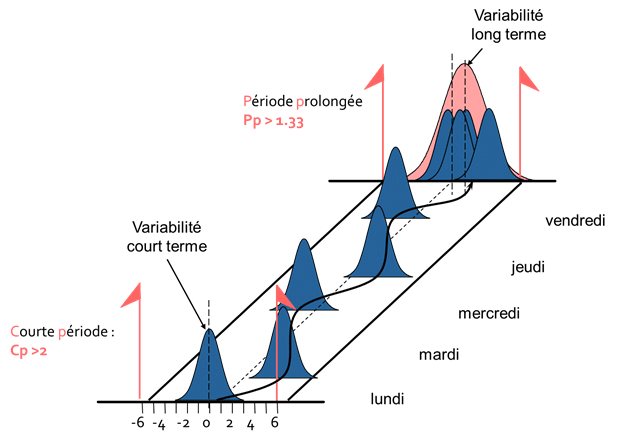User Guide
Short term and long term capability
To appreciate the capability of a process the concept of time is particularly important as we differentiate two types of variability:
- Short term variability: when two parts are produced consecutively, these two parts will not be completely equivalent because of the intrinsic variations of the machine. Short term variability mainly depends on the machine.
- Long term variability: when producing for a longer time period in the same process, the machine will come out of adjustment on its own, series will change, material batches will change etc...which will create new sources of variation. This long term variability depends on the machine but also on several exterior sources of variability and the way that the process is piloted.
Let us observe the following production layout to illustrate:

The production of the week is the result of production from different days of the week: However, as the layout above shows, the production conditions between the different days of the week are not equivalent. The procedure centering is not the same between the productions from Monday, Tuesday, etc...
Consequently, the observed variability over the entire week (red curve) is more important than the observed variability over a short period of time as it takes into account fewer phenomena that could cause variability as an adjustment or material change.
There are therefore two ways of characterising the capability of the process based on the kind of variability observed
Short term Cp: Short term capability makes it possible to characterize the process to produce the parts while taking into account that the intrinsic variability of the process (the variability between two consecutive parts. Short term capability is noted CP and is calculated by:
In general we want:
Long terme Pp:Long term capability makes it possible to characterize the aptitude of the good production pieces over a long period of time, i.e. by taking into account the adjustments and modifications of the processes that may take place. Long term capability is noted Pp and is calculated by:
In general we want:
The long term capability, taking into account the variability sources for the short term, we inevitably have:
And thus
If this is not the case, this does not mean that the short term dispersion is greater than the long term dispersion, only that the dispersion is not stable over time.